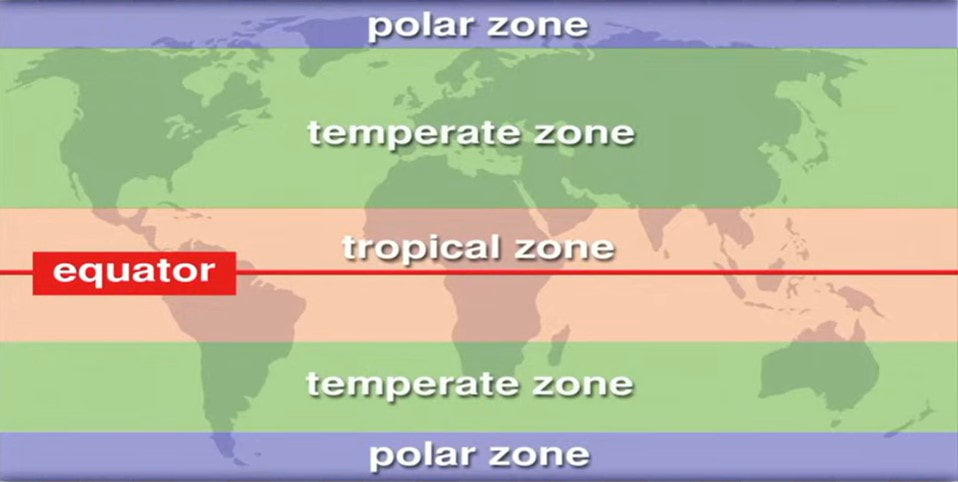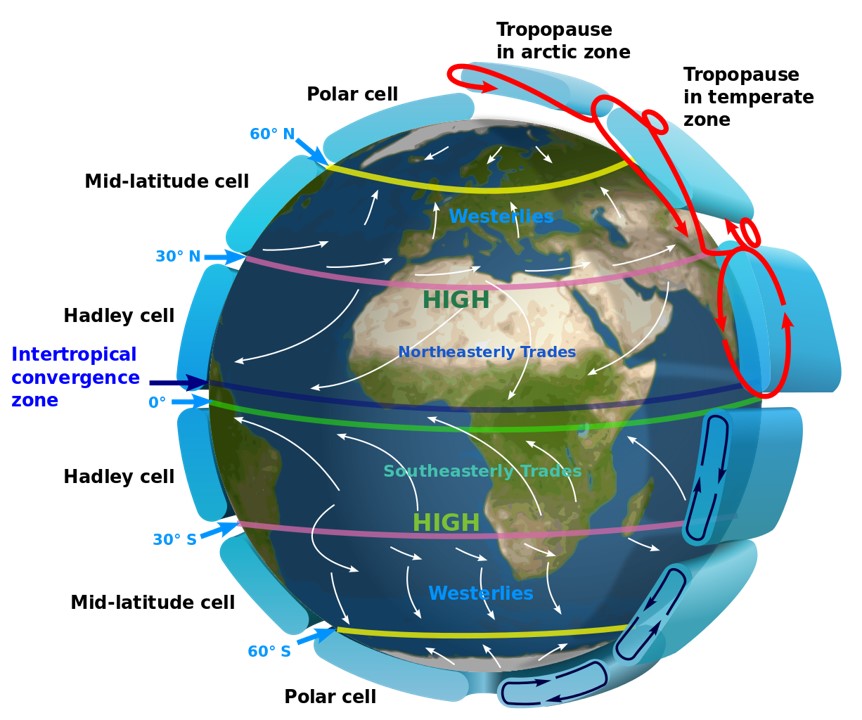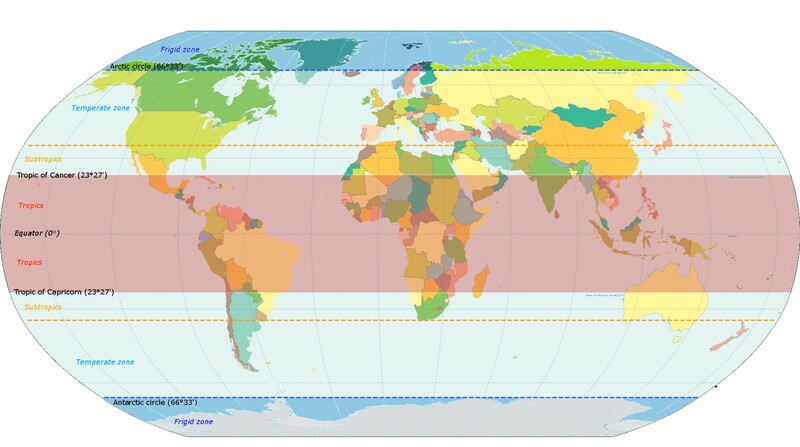climate of botswana
The annual climate of Botswana ranges from months of dry temperate weather during winter to humid subtropical weather interspersed with drier periods of hot weather during summer.
In summer:
The rains are almost entirely limited to summer downpours between December and March, which also mark the season for ploughing and planting.
Cyclic droughts, often brought on by El Nino, lasting up to five or six years in every two decades, can limit or eliminate harvests and reduce livestock to starvation.
More links:
El Nino 2023 could be a monster.
In summer:
- Lasts from October to March,
- Temperatures rise to about 34 °C in the extreme north and southwest, the warmest parts of the country.
- Summer is heralded by a windy season, the winds carrying dust from the Kalahari, from about late August to early October. Annual rainfall, brought by winds from the Indian Ocean, averages 18 inches (460 mm), representing a range from 25 inches (635 mm) in the extreme northeast to less than 5 inches (127 mm) in the extreme southwest.
- Lasts from April to September,
- There is frequent frost at night,
- Temperatures may fall to near freezing in some high-altitude areas during the day.
The rains are almost entirely limited to summer downpours between December and March, which also mark the season for ploughing and planting.
Cyclic droughts, often brought on by El Nino, lasting up to five or six years in every two decades, can limit or eliminate harvests and reduce livestock to starvation.
More links:
El Nino 2023 could be a monster.
How the pacific ocean changes weather around the world
Our current understanding of the El NiNo Southern Oscillation (ENSO)
Click here to read.
LOCAL WEATHER RECORDS AND FORECASTS
Accuweather, click here.
FORECASTED CYCLONES 2023-24
Between December 2023 and March 2024, cyclone strikes are likely in Madagascar and Mozambique, bringing cyclone related flooding and associated impacts. Malawi and Zimbabwe have also been significantly affected during previous cyclone seasons - click here.
HOW TO UNDERSTAND THE WEATHER
Understanding the weather system involves the interaction of the various atmospheric and oceanic processes that plays off differently in different zones of the earth contributing to the daily and long-term weather patterns.
NASA | The Ocean: A Driving Force for Weather and Climate
WEATHER ZONES:
- Tropical Zone: The tropics are regions of Earth that lie roughly in the middle of the globe. The tropics between the latitude lines of the Tropic of Cancer and the Tropic of Capricorn. The tropics include the Equator and parts of North America, South America, Africa, Asia, and Australia. The tropics are warm all year, averaging 25 to 28 degrees Celsius (77 to 82 degrees Fahrenheit). This is because the tropics get more exposure to the sun. Because of all that sun, the tropics don't experience the kind of seasons the rest of Earth does.
- Temperate zones: These zones are the mild temperature areas located between the subtropical and the polar regions. The two regions between the Tropic of Capricorn and the Antarctic Circle or the Tropic of Cancer and the Arctic circle are called the temperate zones. Temperate climates of the Earth are characterized by relatively moderate mean annual temperatures, with average monthly temperatures above 10°C in their warmest months and above −3°C in their colder months (Trewartha and Horn, 1980).
- Polar Zones: During the summer, the average temperature in the polar zones is 7 degrees F (-14 degrees C), while in winter their average temperature is -58 degrees F (-50 degrees C). The main reason why these regions are so cold is because the sun is low on the horizon, even in the summer. Also, the snow and ice surface causes a higher reflectivity of the sun's incoming radiation at the surface.
IS THE EARTH PERFECTLY ROUND (NASA Knows)?
- It is nearly flat at the poles and round at the sides. It is somewhat elliptical although generally round. That is how it transforms into an oblate spheroid. This form is also known as a geoid.
- The rotation of the earth affects its form. The Earth's revolution about its axis causes it to bugle in the centre, at the equator. As a result, it is more bulged in the centre with flat poles, and thus its form.
Here are key aspects of atmospheric and oceanic processes to consider:
ATMOSPHERIC PROCESSES:
Air currents are caused by the sun's uneven heating of Earth. As sunlight beams down on Earth, it warms some areas, particularly the tropics, more than others. As Earth's surface is heated, it warms the air just above it. The warmed air expands and becomes lighter than the surrounding air. It rises, creating a warm air current. Cooler, heavier air then pushes in to replace the warm air, forming a cool air current.
- Large-scale atmospheric circulation:
- Hadley, Ferrel, and Polar Cells: Understand the large-scale atmospheric circulation patterns that influence global weather.
- Atmospheric Composition:
- Gases: Know the major components of the atmosphere - nitrogen, oxygen, argon, and trace gases.
- Water Vapor: Understand the role of water vapor in the atmosphere and its importance in weather processes.
- Solar Radiation:
- Insolation: Learn how solar radiation interacts with the Earth's surface, influencing temperature and weather patterns.
- Atmospheric Layers:
- Troposphere: This is where weather occurs. Temperature generally decreases with altitude.
- Stratosphere: Contains the ozone layer, influencing climate and weather patterns.
- Air Pressure and Wind:
- High and Low Pressure: Understand how differences in air pressure contribute to the formation of wind and weather systems.
- Coriolis Effect: This deflects moving air to the right in the Northern Hemisphere and to the left in the Southern Hemisphere.
- Humidity and Dew Point:
- Humidity: Measure of water vapor content in the air.
- Dew Point: Temperature at which air becomes saturated with moisture and dew forms.
- Cloud Formation:
- Adiabatic Cooling: Understand how air cools as it rises, leading to cloud formation.
- Cloud Types: Recognize different cloud types and their associations with specific weather conditions.
- Precipitation:
- Rain, Snow, Sleet, Hail: Understand the conditions that lead to different forms of precipitation.
- Fronts:
- Warm and Cold Fronts: Learn how these boundaries between air masses influence weather patterns.
- Thunderstorms and Tornadoes:
- Convective Processes: Understand how convective currents can lead to the formation of thunderstorms.
- Tornado Formation: Learn the conditions necessary for tornado development.
OCEANIC INFLUENCES:
Wind, tides, and differences in temperature and salinity drive ocean currents. The ocean churns up different types of currents, such as eddies, whirlpools, or deep ocean currents. Larger, sustained currents—the Gulf Stream, for example—go by proper names. Taken together, these larger and more permanent currents make up the systems of currents known as gyres.
There are five major gyres: the North and South Pacific Subtropical Gyres, the North and South Atlantic Subtropical Gyres, and the Indian Ocean Subtropical Gyre.
See video - How do ocean currents work: https://youtu.be/p4pWafuvdrY
- Ocean Currents: Recognize how ocean currents can moderate or intensify weather patterns.
- Sea Surface Temperatures: Understand their influence on regional climates.
CLIMATE CHANGE:
- Greenhouse Gases: Understand the role of greenhouse gases in global warming.
- Impacts: Recognize the potential consequences of climate change on weather patterns.
GLOBAL CIRCULATION PATTERNS:
- Climate Patterns:
- El Niño and La Niña: Understand the oceanic and atmospheric conditions associated with these climate phenomena.
- Monsoons: Learn about seasonal wind patterns influencing climates in certain regions.
WEATHER INSTRUMENTS:
Barometer, Thermometer, Hygrometer: Understand the use and principles behind these instruments for measuring atmospheric conditions.
NUMERICAL WEATHER PREDICTION:
Weather Models: Learn how computers model the atmosphere to predict weather patterns.
Forecasting: Understand the challenges and limitations of weather forecasting.
Understanding the weather system is an interdisciplinary endeavor that combines principles from physics, meteorology, climatology, and oceanography. It's a dynamic and complex system that involves ongoing learning and adaptation to new scientific findings.
Ask NASA
National Geographic Education






